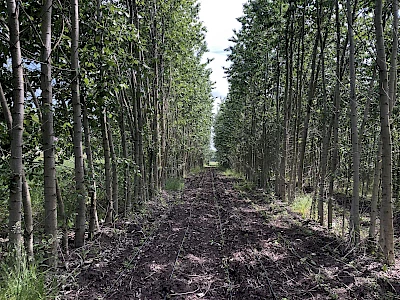Agrowood plantation potential on smaller plots around 4 ha
23.06.2021
 Within the framework of OLGA, Marie Herzig and Lena Schwarz, students of TU Dresden, determined the potential for agrowood to improve the ecological condition of smaller waterstreams in the City of Dresden and the surrounding districts.
Within the framework of OLGA, Marie Herzig and Lena Schwarz, students of TU Dresden, determined the potential for agrowood to improve the ecological condition of smaller waterstreams in the City of Dresden and the surrounding districts.
In order to achieve the goals of the European Water Framework Directive, the significant reduction of substance inputs into watercourses is imperative. For the most part, such substance inputs are caused by erosion from intensively farmed areas. The establishment of agroforestry plantations as buffer strips between fields or grassland and watercourses can relieve the watercourses of substances and enhance the ecological value of the riparian zone. In addition, agroforestry plantations contribute to agricultural value creation.
The presented work serves as a first assessment of the area potentials for agricultural wood on arable land, grassland and brownfields in the Dresden region. After carrying out the analysis, 3,302 areas within the study area come into question for the establishment of agrowood plantations. These have a total area of 13,296 ha, which corresponds to a share of 9.6 % of the total grassland, arable land and fallow land in the study area. It is noticeable that most of the areas have the minimum size, i.e. they are rather small. On average, the area size is 4 ha, with the largest potential area being 33 ha.
Optimally, plantations should be established on special agricultural sites or fallow land so as not to compete with land used for food production. Moreover, agroforestry structures are a valuable climate adaptation measure to reduce increasing extreme events in the the Dresden region.
